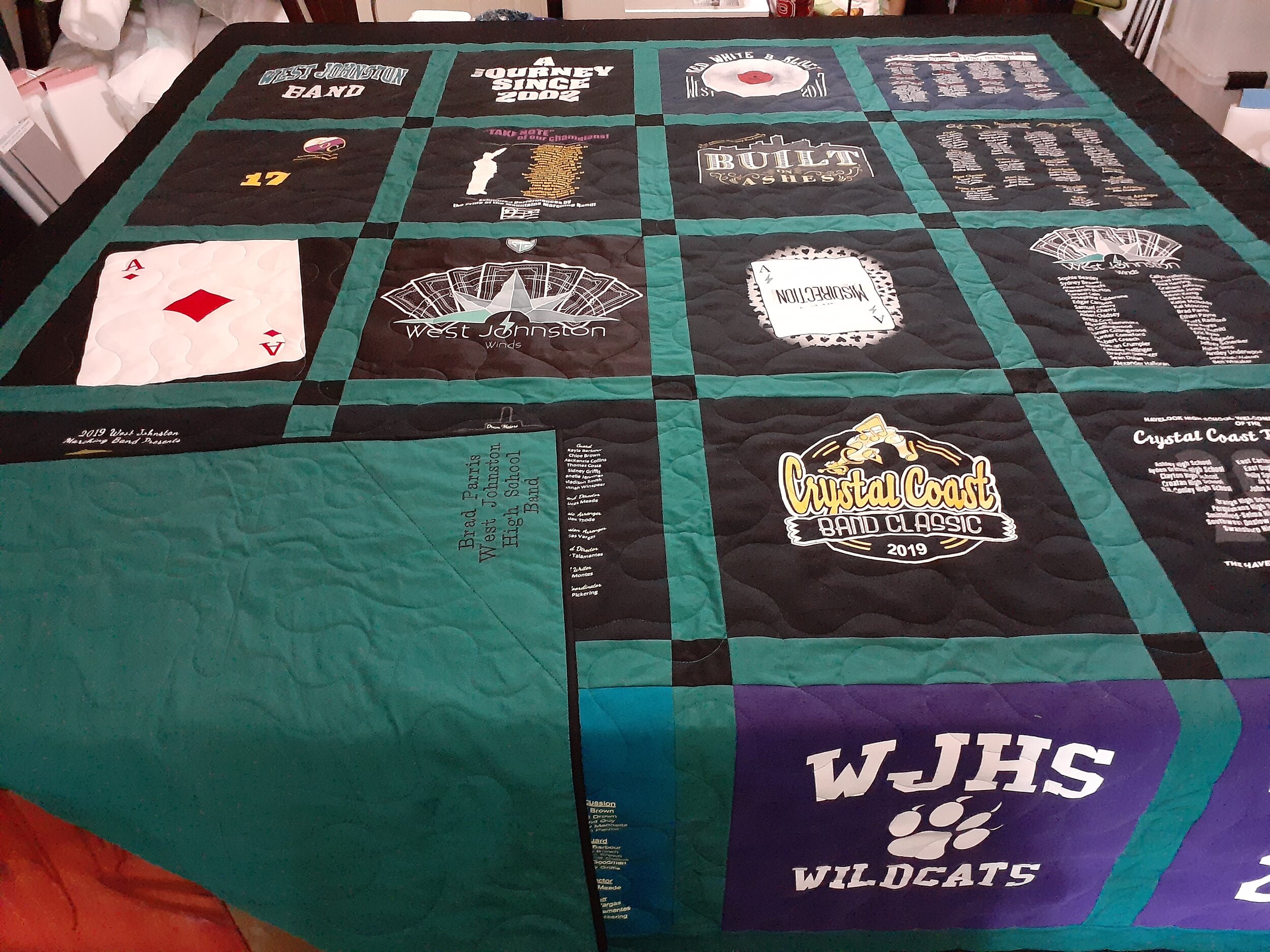“I am beginning to learn that it is the sweet, simple things of life which are the real ones after all.”
Laura Ingalls Wilder
Happy October!
I hope you have had a brilliant week in all of your endeavors! I promised last week that I would define some quilting vocabulary for you. Many of my customers are not quilters, which is why they hire me to make things for them, so I usually spend a little bit of time explaining quilting vocabulary, especially when we are deciding fabric. Often I show them a picture of a quilt and point to the relevant parts as I discuss what parts of the quilt they have to decide in terms of fabric.
I made a list of the terms I most often explain, and I found twenty four terms. In this blog post I will define twelve I use most often in meetings with clients, and I will define the rest next week.
You can see most of the terms below in this quilt!
Sashing-the fabric around the blocks and between the rows. (The teal in the picture above.)
Cornerstones-the small 2” squares between the rows and the blocks. (There are black cornerstones in the picture above.) Custom Quilt do not have cornerstones because the layout is not in rows.
Inner Border-The border closest to the blocks; it usually matches the sashing. (Teal in the picture above.)
Outer Border-The large, usually 6” border on the outside of the quilt. (Black in the picture above.)
Middle Border-A border between the inner and outer border, usually for a pop of color and is 1”-2”.
Binding-The edge that finishes the quilt. (The tiny black edge on the quilt above.)
Backing-The fabric for the back of the quilt. (Teal in the quilt above; you can see it in the corner that is folded over.)
Embroidery-Custom lettering...names, dates, messages to a quilt. (The quilt above has an embroidered label on the back of it; seen in the folded over corner.)
I interfaced the towels in this quilt to make them less likely to stretch and unravel.
Interfacing-Pellon 911 Featherweight is the brand I use, and it is a lightweight fabric that gets steam pressed onto the backs of the pieces of the t-shirt/clothing/fabric. It allows a stretchy fabric to behave more like a cotton fabric. (In the quilt above, interfacing was used to stabilize the Hurricane’s towels.)
Batting-I use 80/20 Cotton/Polyester blend and it is the layer of wadding between the top (t-shirt block layer) and the back of the quilt.
Hanging Sleeve-a flat ~3” sleeve, usually made from the same fabric as the backing fabric. The top edge is sewn into the top binding and the bottom edge is hand sewn down to the back. A rod or pole slides into the sleeve to allow the quilt to be hung. (The sleeve for the Hurricane’s Quilt would be made from Hurricane’s fabric.)
Scraps/Remnants-Any fabric left over from making a sewing project. For t-shirt quilts that means any part not used in the block---sleeves, bottoms of shirts, etc.
Next week I will cover words like piecing, applique, and longarm. Please let me know if you have a question...leave me a comment, and I will try to answer it!
Do you have a term or a part of a quilt or the quilting process that you don’t know how to name or define?
Sending Quilting Love,
Ginger
Coming Next Week: More quilting terms!
I am Reading: I am still reading Wicked by Gregory McGuire and Tightrope by Simon Mawer, and I am working my way through Let Your Creativity Work for You by Heather Allen. I am still reading bits of poetry, and I have stacks of things to read, which always makes me happy! I listened to a reading given by poet and essayist Ross Gay this week, and I highly recommend looking into his work. His talk and reading were so good!



